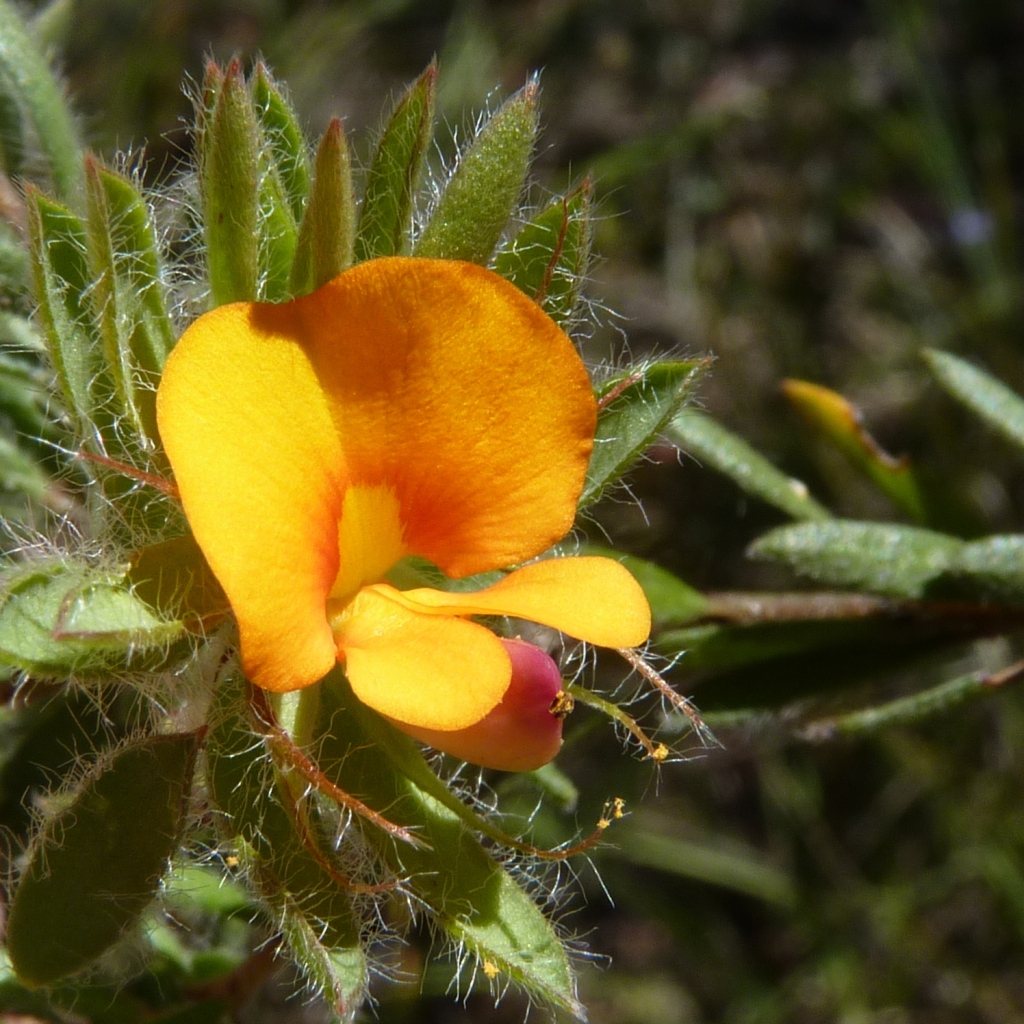Pultenaea humilis
Benth. ex Hook.f. Dwarf Bush-peaSpreading, often decumbent shrub to 50(–100) cm high; stems terete, hairy when young, old stems scarred with broken stipules and leaf-bases. Leaves alternate, elliptic or oblanceolate, 6–14 mm long, 1–4 mm wide; apex acute but not pungent; upper surface glabrous, paler than lower; lower surface hairy or glabrous; margin incurved; stipules lanceolate, 2–3 mm long, apex slender, usually recurved. Flowers solitary in axils, clustered at tips of branches, occasionally head-like; shoot growing on at or just before anthesis; bracts absent, but floral leaf often reduced and with enlarged stipules; calyx 6–8 mm long, hairy to glabrous, lobes tapering to long, slender points; bracteoles attached at, or just above base of calyx tube, linear-lanceolate, 4–6 mm long, midrib and base occasionally hairy, margin papery; standard 8–10 mm wide; ovary and style glabrous except for a tuft of hair at summit of ovary. Pod ovate, plump, apex hairy, enclosed by calyx. Flowers Oct.–Nov.
Wim, GleP, Brid, VVP, VRiv, GipP, OtP, WaP, Gold, CVU, GGr, DunT, NIS, EGL, EGU, HSF, HNF, OtR. Also NSW, Tas. Widely distributed in central and western areas on and south of the Great Dividing Range, and north and south of the Range in the east. Usually occurs on sandy soils in a variety of habitats including dry, open-forest and dry and wet heath.
Corrick, M.G. (1996). Pultenaea. In: Walsh, N.G.; Entwisle, T.J., Flora of Victoria Vol. 3, Dicotyledons Winteraceae to Myrtaceae, pp. 765–793. Inkata Press, Melbourne.
 Spinning
Spinning
